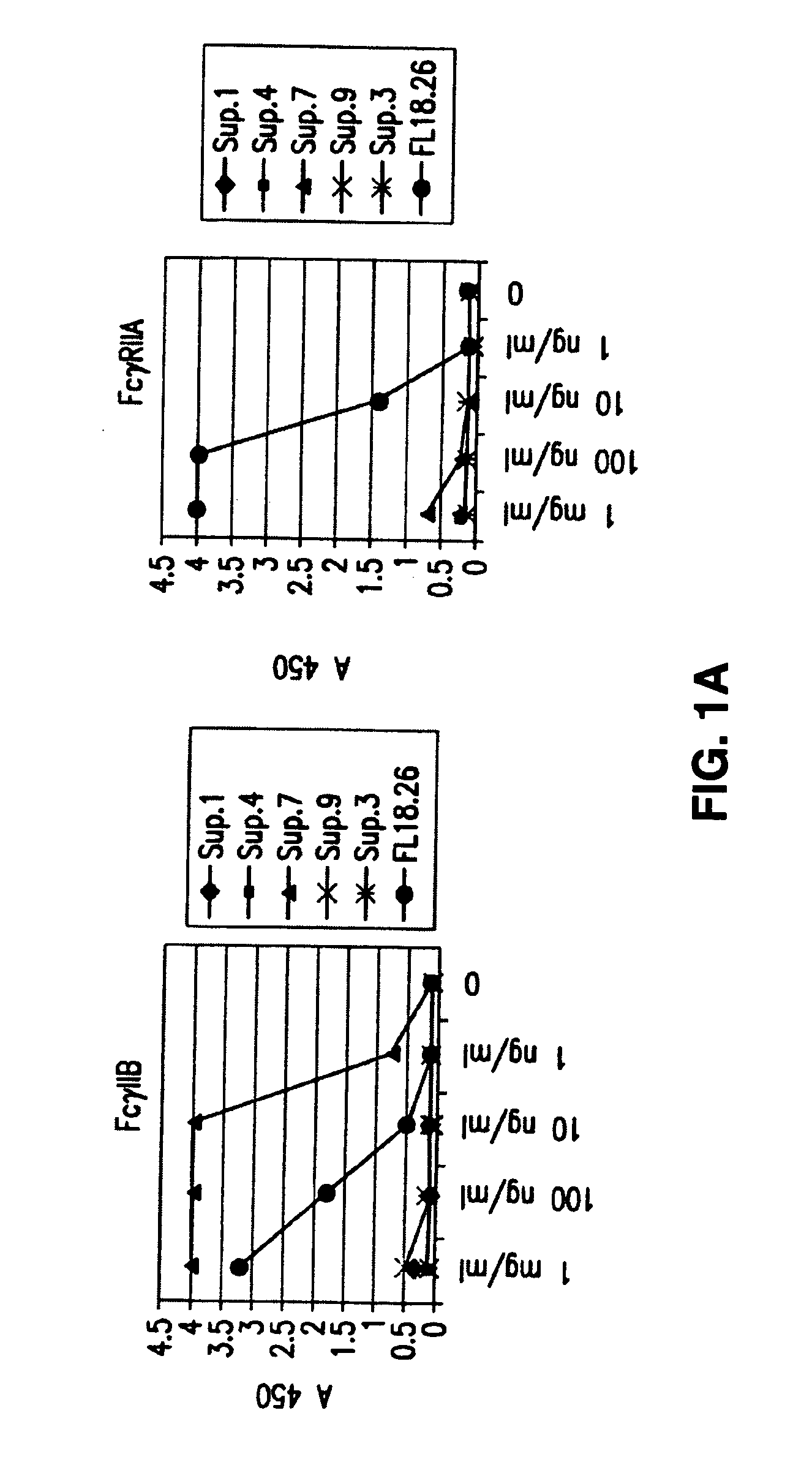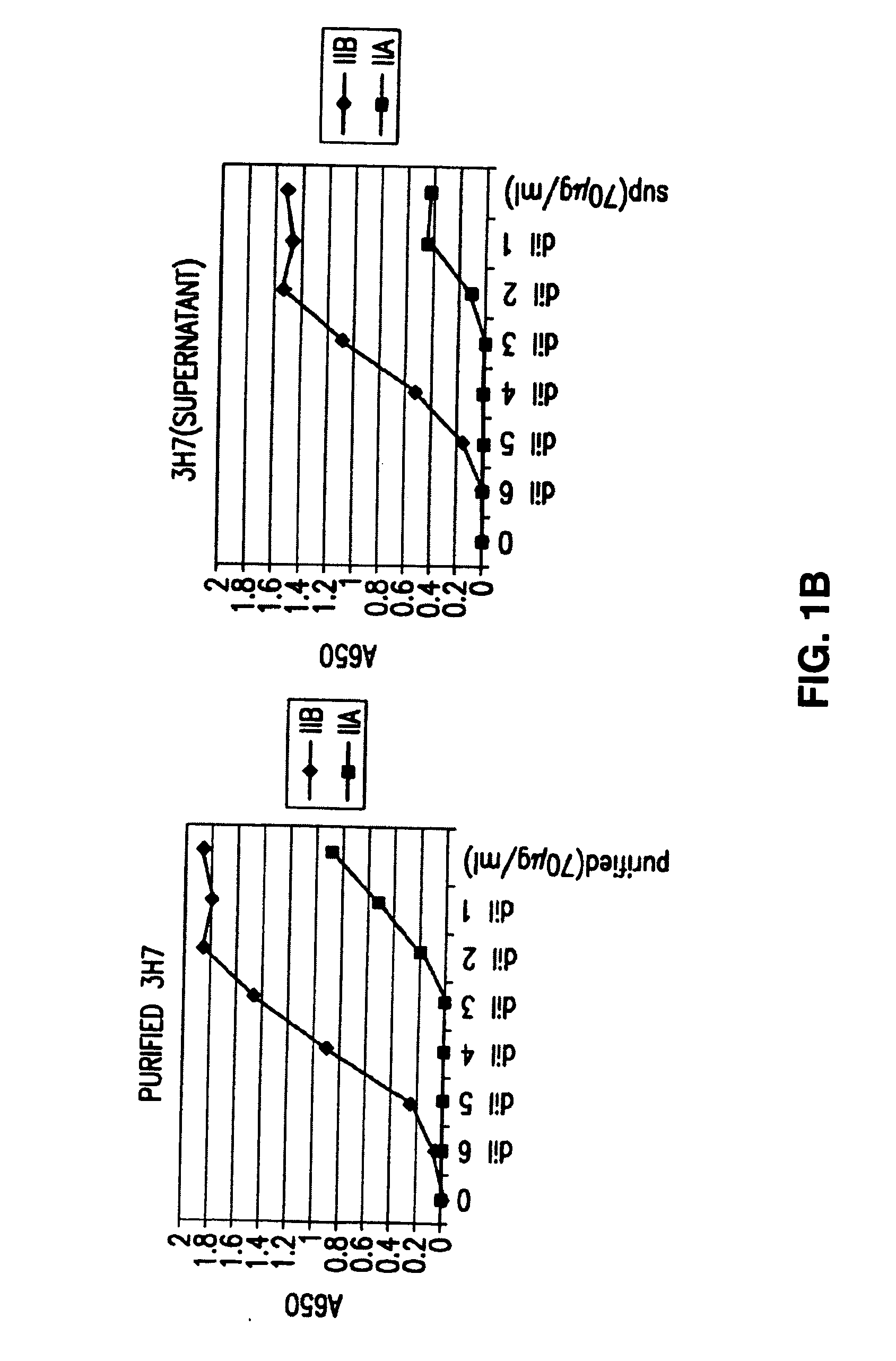FcgammaRIIB-specific antibodies and methods of use thereof
a technology of fcgammariib and specific antibodies, applied in the field of fcgammariibspecific antibodies, can solve the problems of increasing the damage, increasing the damage, and increasing the damage of the tumor, so as to delay or minimize the onset of disease, minimize the spread of cancer, and enhance the therapeutic effect of another therapy.
- Summary
- Abstract
- Description
- Claims
- Application Information
AI Technical Summary
Benefits of technology
Problems solved by technology
Method used
Image
Examples
Embodiment Construction
[0105] 5.1 FcγRIIB-Specific Antibodies
[0106] The invention encompasses antibodies (preferably monoclonal antibodies) or fragments thereof that specifically bind FcγRIIB, preferably human FcγRIIB, more preferably native human FcγRIIB with a greater affinity than said antibodies or fragments thereof bind FcγRIIA, preferably human FcγRIIA, more preferably native human FcγRIIA. Preferably, the antibodies of the invention bind the extracellular domain of native human FcγRIIB. In certain embodiments, the antibodies or fragments thereof bind to FcγRIIB with an affinity greater than two-fold, four fold, 6 fold, 10 fold, 20 fold, 50 fold, 100 fold, 1000 fold, 104 fold, 105 fold, 106 fold, 107 fold, or 108 fold than said antibodies or fragments thereof bind FcγRIIA.
[0107] The invention also encompasses antibodies or a fragments thereof that specifically binds FcγRIIB, particularly human FcγRIIB, more particularly native human FcγRIIB, and blocks the Fc binding domain of FcγRIIB, particularl...
PUM
| Property | Measurement | Unit |
|---|---|---|
| Immunogenicity | aaaaa | aaaaa |
| Affinity | aaaaa | aaaaa |
| Breaking strength | aaaaa | aaaaa |
Abstract
Description
Claims
Application Information
 Login to View More
Login to View More - R&D
- Intellectual Property
- Life Sciences
- Materials
- Tech Scout
- Unparalleled Data Quality
- Higher Quality Content
- 60% Fewer Hallucinations
Browse by: Latest US Patents, China's latest patents, Technical Efficacy Thesaurus, Application Domain, Technology Topic, Popular Technical Reports.
© 2025 PatSnap. All rights reserved.Legal|Privacy policy|Modern Slavery Act Transparency Statement|Sitemap|About US| Contact US: help@patsnap.com



